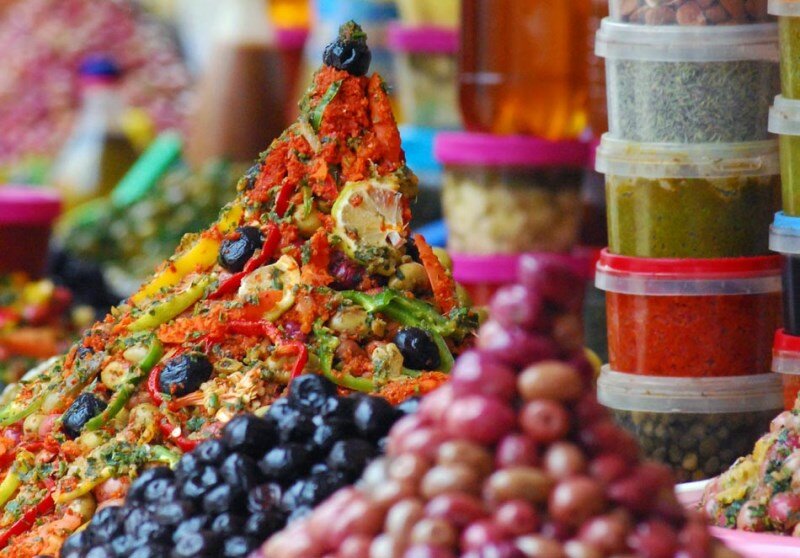Our language school in Guadalajara, Mexico has kindly prepared this guide to the sights, sounds and smells of Guadalajara to make your trip to Mexico a memorable one…The Centro Historico is another name for the “old town” part of downtown Guadalajara. You can get a map of the different important museums, government buildings and plazas at the Tourism Department in Plaza Tapatia. This 7 square-block plaza is filled with important historical buildings and architecture, but is also where most Tapatios spend their free time in the afternoon or on Saturdays and Sundays.
Make sure that you see the Plaza de Armas, Plaza de la Liberacion, Plaza de la Rotonda de los Hombres Ilustres, the Government Place and the nearby State Museum on Liceo and Hidalgo and the City Museum on Independencia.
The Chapala lakeshore, holds a little town on its shores, and thus it constitutes one of the main tourist spots close to Guadalajara, where tourists find a peaceful area which boasts great hotels and recreation to fit the most widely diverse tastes, ranging from romantic serenades on tree-shaded terraces where guitars provide the background, to the youthful boisterousness of the discos with all the lastest tunes.
Tequila is the name of a village located forty miles northeast from Guadalajara. In Nahuatl means ” Place of wild herb”. Tequila is made from a variety of agave known as Blue Weber, which only grown in the mild climate of Jalisco’s central corridor and in some parts of Michoacán, Guanajuato y Nayarit.
Tequila Express is a train ride that includes events, food and drink. This runs daily but reservations are required.
Tonala: Means “Place where the sun rises”, It is a small town that keeps its peaceful atmosphere with its church and atrium. It is a very pleasant town and has an ancestral pottery tradition. The handcrafts stores abound in the downtown area. You can enjoy the tianguis on Thursday and Sundays.
Tonalá is another pottery producing area, less beautiful than Tlaquepaque, but equally attractive. In Tonalá you can get into the factories, and see how the people are working. You can learn about glass blowing, which is spectacular.
At Tonalá you can find very cheap second hand products, which have such a small defect that you can’t even notice it.
Tlaquepaque: This is a beautiful peaceful area of Jalisco, located in the metropolitan zone of Guadalajara. Its streets, majestic constructions and multiple artistic pieces are a proof of the sensitivity of its people.
The name Tlaquepaque comes from the Nahuatl word “Tlalipac”, meaning “place over high clay hills”, a fact that has defined its natural vocation as artisans whose work is appreciated in the entire world.
Tlaquepaque is a pottery and handicrafts area; crowded with arts and crafts stores. You can find anything here, from a small ashtray to a large sculpture. In the centre of Tlaquepaque is El Parian, an area full of bars and restaurants, where, while you enjoy traditional snacks, you can hear trios, mariachi or marimba music.
One of the most attractive places in Tlaquepque is the Galería Sergio Bustamante, it offers very original, modern craftsmanship, which comes complete with a certification of authenticity. A very good restaurant in the area is the Abajeño Campestre, a big garden where you can eat exquisite Mexican food, listen to mariachis and see folkloric dance.
Puerto Vallarta On the Pacific coast of Mexico in the northwest corner of the state of Jalisco, you will find Puerto Vallarta, a colonial seaside village cradled by the rugged, tropical Sierra Madre mountains to the east and 22 mile Bay of Banderas, Mexico’s largest natural bay.
Vallarta has a population estimated to be 350,000 in an area of 800 square miles. The excellent weather and the beautiful ocean beaches brings Puerto Vallarta alive from Mid November through to April (Vallarta’s high season).
Downtown Zapopan The Zapopan area is characterised for being the home of the Basílica de la Virgen de Zapopan. It is a very nice area, full of plazas and gardens, great to take a walk here; you can visit the Huichol Art Museum and the Plaza de las Américas. If you are in Zapopan, the Hostería del Ángel is highly recommended for a meal, it is a great restaurant that serves good wine and Spanish tapas.
THE CATHEDRALThe main plaza in downtown Guadalajara is the site of the city’s most famous landmark. The Cathedral was started in 1571 and required more than a century to complete. The yellow-tiled twin steeples of the cathedral were rebuilt during the early part of the 19th century after being destroyed during an earthquake.
Inside the cathedral are figures of many saints, eleven alters and it is also the final resting place for the recently assassinated Cardinal Posadas. Outside the cathedral are stands filled with rosaries, figures of saints, prayer cards and you can even buy “milagros”. These small trinkets are made in the shape of body parts or animals. If for example, you have prayed that your “tennis elbow” or painful knee is healed and it gets better, you can buy a small trinket in the shape of an arm to be placed in the cathedral certifying that you have been cured by a “milagro” (miracle).
Museo Regional - Museum Across the plaza north of the cathedral (Tues-Sat 9am-6.30pm, Sun 9am-2.30pm). Extensive exhibits on regional archaeology, modern history and nineteenth-century.
The Government Palace – The Government Palace interior houses paintings by José Clemente Oozco. One of this depicts the most realistic image ever made of Father Hidalgo. This huge depiction symbolises men who fight for freedom.
Instituto Cultural Cabañas The Hospicio Cabanas was once an orphanage, but now has been converted into the most wonderful centre of music and art. Orozco, Guadalajara’s most famous artist, has filled the Cabanas with his murals and also has a permanent exposition of his smaller works on display.
There are more than 26 patios, each surrounded by rooms filled all kinds of activities. You might find small children taking dance, art or music classes, and politicians giving speeches or artists displaying their latest works. It is a wonderful place to visit and to people watch!
THE MARKET SAN JUAN DE DIOS
The Market San Juan de Dios is also known as the “Libertad”. This huge market in downtown Guadalajara is really a shoppers dream! If you love Mexican handicrafts, household goods, food, music and people…this is a place to spend the whole day.
You can buy huaraches (the Mexican sandals with tire treads for soles), bird cages (plus birds), food, paper flowers, embroidered clothes, guitars, hats, leather purses, furniture, miniatures and the list goes on!! There is a huge food section that will dazzle you with its colours and aromas! Walk through the restaurant section to see what the typical Mexicano has for a meal – just remember to smile and not roll your eyes. And to top it off there is even a section for “witchcraft” where you can buy dried hummingbirds to stick in your bra for good luck! Truly and adventurous place to explore!
EL ZOOLOGICO
Though it is located about 8 miles from downtown Guadalajara, the zoo is definitely worth a visit. It is on the Barrancas de Oblatos – huge deep gorges that are filled with rivers spilling over the edges. The gorgeous shades of greens from all the different vegetation cannot be described!
The minitrain that travels throughout the zoo will get you around easily and let you see all the local animals plus many exotic animals from throughout the world. You see them VERY close up!! Nearby the zoo, if you have children, you can visit the Planetarium and the Selva Magica or “Magic Jungle” amusement park for a little break from the museums and churches.
To see our language courses on offer in Mexico and to experience Guadalajara for yourself, click on the link below.






 Designed by
Designed by